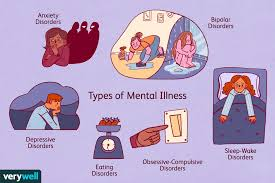A nurse is caring for a client diagnosed with a mental illness. Which of the following actions by the nurse demonstrates the ethical concept of autonomy?
Supporting the client's wish to refuse prescribed medications.
Making sure the client understands expectations for client participation.
Explaining unit rules and policies regarding unacceptable behaviors.
Encouraging client feedback about satisfaction with the facility experience.
Calmly speaking the client's name out of the car window may seem like a non-threatening action, but it involves direct engagement with the client while he is holding a weapon. This could put the nurse at risk if the client reacts unpredictably or feels threatened.
The Correct Answer is A
Choice A Reason:
Supporting the client's wish to refuse prescribed medications is a direct demonstration of respecting the client's autonomy. Autonomy in nursing is the right to self-determination, where patients are provided with adequate information to make their own decisions based on their beliefs and values. By supporting the client's decision, the nurse acknowledges the client's capacity to make informed choices about their own health care, even if the choice is different from what the medical team suggests.
Choice B Reason:
Ensuring that the client understands expectations for participation is more about informed consent and education rather than autonomy. While it is related to autonomy, it does not directly demonstrate the ethical concept since it does not involve a decision made by the client.
Choice C Reason:
Explaining unit rules and policies about unacceptable behaviors is part of the education process and setting boundaries within the healthcare environment. This action is necessary for all clients but does not specifically address the client's autonomy in making personal health decisions.
Choice D Reason:
Encouraging client feedback about satisfaction with the facility experience is a way to involve clients in the evaluation process of the facility's services. While this can be seen as respecting the client's opinions, it is not a direct action of supporting the client's autonomous decisions regarding their treatment plan

Nursing Test Bank
Naxlex Comprehensive Predictor Exams
Related Questions
Correct Answer is D
Explanation
Choice A Reason:
An adventitious crisis is not applicable here. This type of crisis is usually a result of a natural or man-made disaster, war, or major accident, which is not the case with the client's situation.
Choice B Reason:
Maturational crises are associated with life transitions or developmental stages, such as retirement or menopause. While the client is older, the crisis is not due to a normal life transition but rather an unexpected event.
Choice C Reason:
Developmental crises occur as a person moves through the stages of life. The client's crisis does not stem from a developmental issue but from an external event that has disrupted their life.
Choice D Reason:
Situational crises arise from external sources that an individual may face throughout life, such as the death of a loved one, loss of a job, or severe illness. The client's inability to cope with the sudden death of their spouse is a situational crisis.
Correct Answer is A
Explanation
Choice A Reason:
Offering false reassurance occurs when a nurse or healthcare provider dismisses a patient's concerns with general comforting statements without addressing the reality of the situation or the patient's feelings. In this case, the nurse's response of "Don't worry, no one will harm your family" is an attempt to alleviate the patient's anxiety without acknowledging the patient's fear or providing a realistic plan to ensure the safety of the patient's family. This type of communication can undermine trust and prevent the patient from feeling heard and supported.
Choice B Reason:
Offering sympathy involves sharing feelings of pity or sorrow for someone else's misfortune. While the nurse's response may seem sympathetic, it does not directly express shared emotions or an understanding of the patient's distress. Therefore, it does not represent offering sympathy as a communication breakdown in this context.
Choice C Reason:
Providing a passive response would involve the nurse not actively engaging with the patient's concerns or failing to provide any response. Since the nurse in the scenario does respond to the patient's statement, this does not constitute a passive response.
Choice D Reason:
Showing disapproval would involve the nurse expressing judgment or criticism of the patient's feelings or actions. The nurse's response does not contain elements of judgment or criticism; rather, it is an attempt to reassure the patient, albeit falsely.
Whether you are a student looking to ace your exams or a practicing nurse seeking to enhance your expertise , our nursing education contents will empower you with the confidence and competence to make a difference in the lives of patients and become a respected leader in the healthcare field.
Visit Naxlex, invest in your future and unlock endless possibilities with our unparalleled nursing education contents today
Report Wrong Answer on the Current Question
Do you disagree with the answer? If yes, what is your expected answer? Explain.
Kindly be descriptive with the issue you are facing.
